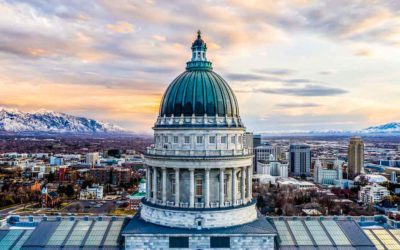
Written by William C. Duncan
May 10, 2022
Over the weekend, protesters publicized information about the private homes of Supreme Court justices believed to favor letting states regulate abortion, leading to protests at the homes of some justices and increased security for justices and the Supreme Court itself. A bipartisan bill to provide additional security for justices has been introduced in the Senate.
This follows the unprecedented leak of a draft opinion written by Justice Samuel Alito in a case challenging a Mississippi law limiting abortion after 15 weeks of pregnancy. The court carefully protects the confidentiality of these documents so the justices can consider and discuss legal issues freely without outside pressure. Speaking to the Associated Press, Sen. Mike Lee, who served as a clerk to Justice Alito, “described the security around the court’s work, complete with ‘burn bags’ to collect and double-shred the day’s discarded documents.”
Court insiders have occasionally shared information with reporters in the past. A piece in The New Yorker described how a Time magazine reporter had predicted the drift of the Roe opinion based on information from Supreme Court personnel. In 1919, a Supreme Court clerk resigned after he was accused of sharing information on an upcoming Supreme Court patent decision with Wall Street traders. None of these episodes, however, has neared the significance of supplying a confidential draft opinion to the press prior to its finalization.
Of course, what is most troubling about the misuse of access to the court’s documents is the use of that information to try and intimidate the justices.
Intimidation of the justices is not entirely new.
At the urging of President Thomas Jefferson, Rep. John Randolph of Virginia moved to impeach Justice Samuel Chase in 1804. The impeachment charged Chase with “refusing to dismiss biased jurors and of excluding or limiting defense witnesses in two politically sensitive cases.” The impeachment vote was successful, but the Senate acquitted Chase on all the charges.
The most well-known episode is probably the 1937 Judicial Procedures Reform Bill proposed by President Franklin Roosevelt. After the Supreme Court held that some of the administration’s New Deal legislation conflicted with the Constitution, the president proposed allowing himself “to appoint up to six additional justices to the Supreme Court for every justice older than 70 years, 6 months, who had served 10 years or more.” That attempt failed.
More recently, members of a special commission on the court split over whether to suggest adding additional justices as some advocates have promoted.
All these developments give some context to the current situation at the court. Since Supreme Court opinions have tremendous influence on the law, it is not surprising that politicians and activists want to shape the makeup and decisions of the court. The Constitution provides opportunities to do that: The Constitution can be amended; Congress can enact legislation to change the underlying law applied by the court; and voters can select leaders who will nominate and approve justices with different approaches to the law.
What the Constitution does not provide – and civil society must not countenance – are attempts to shape the court’s rulings through pressure. That would fatally undermine the principle of judicial independence, which has been a foundation of America’s democratic republic since the debate over ratification of the Constitution. Whatever the motivating cause or agenda, cracking the foundation of America’s political house as a tactic to save or replace one of its policy walls is a terrible trade.
More Insights
Read More
Is California’s minimum wage hike a mistake?
Is raising the minimum wage a good tool to help low-income workers achieve upward mobility? That’s the key question at the heart of the debate over California’s new $20 an hour minimum wage law for fast food workers.
Why is Utah at odds with Justice Department over treatment of gender-dysphoric prisoner?
Lawsuit illustrates a little-known practice of federal agencies – giving various forms of “guidance” which are not supposed to be legally binding. The practice raises serious legal and constitutional questions.
What would a parent-teacher ‘handshake’ look like in Utah?
This partnership does not allow either party to pass blame entirely to the other. There is no scapegoat, only opportunities for either party or both to work on the factors within their scope.


